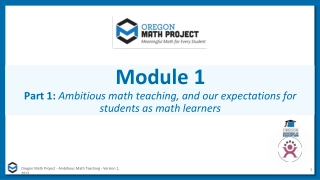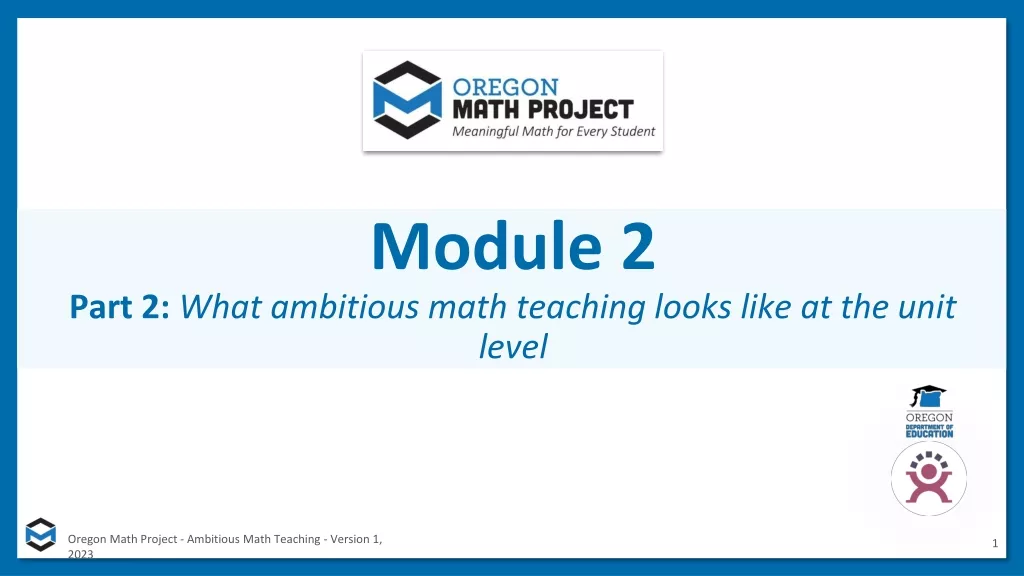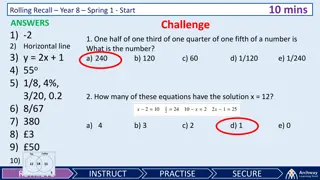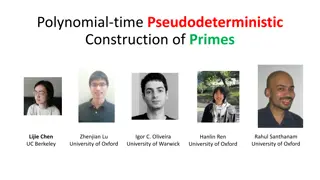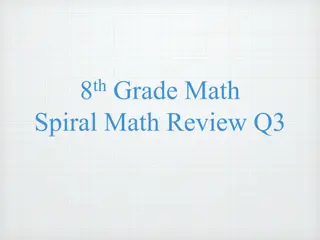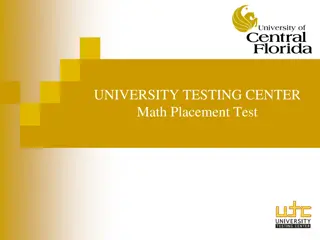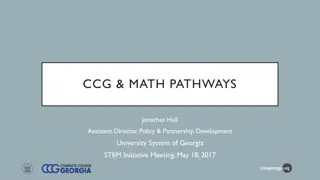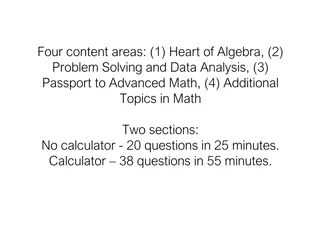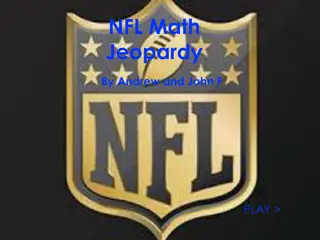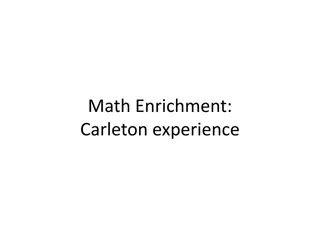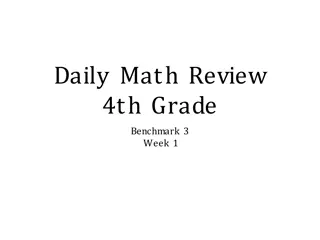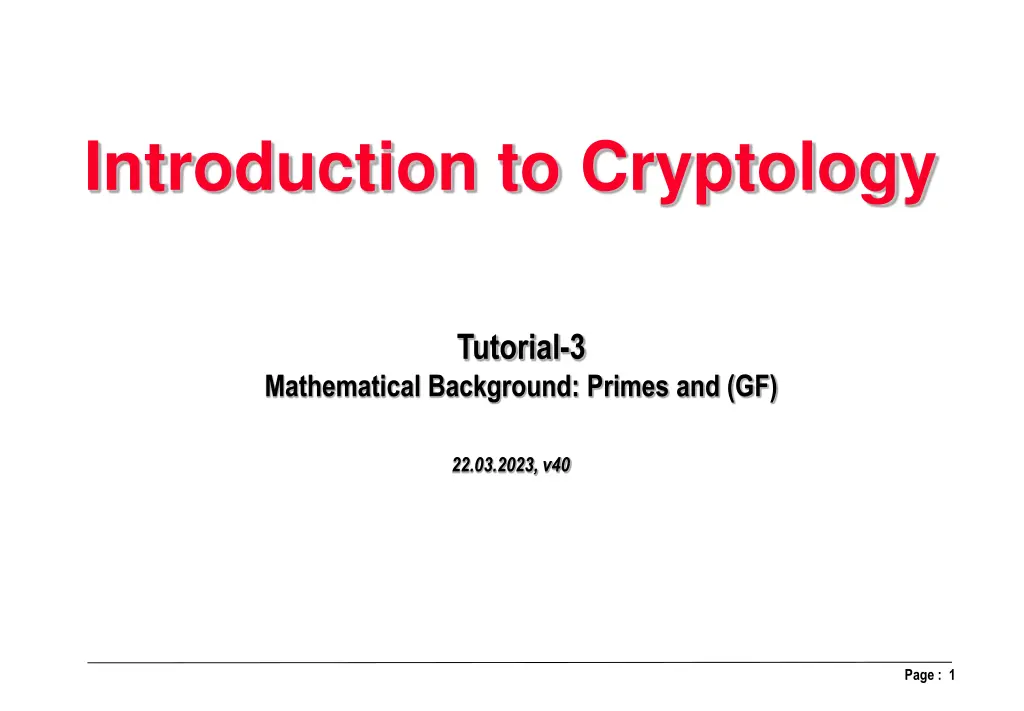
Cryptology Tutorial: Understanding Primes and Generating Large Numbers
Learn about primality tests, generating large prime numbers, and using Pocklington's Theorem in cryptology. Explore examples of pseudoprimes and definitely prime numbers with mathematical solutions. Discover how to set up a cryptographic system using known prime numbers and primitive elements.
Uploaded on | 0 Views
Download Presentation

Please find below an Image/Link to download the presentation.
The content on the website is provided AS IS for your information and personal use only. It may not be sold, licensed, or shared on other websites without obtaining consent from the author. If you encounter any issues during the download, it is possible that the publisher has removed the file from their server.
You are allowed to download the files provided on this website for personal or commercial use, subject to the condition that they are used lawfully. All files are the property of their respective owners.
The content on the website is provided AS IS for your information and personal use only. It may not be sold, licensed, or shared on other websites without obtaining consent from the author.
E N D
Presentation Transcript
Introduction to Cryptology Tutorial-3 Mathematical Background: Primes and (GF) 22.03.2023, v40 Page : 1
Summary: Primality check and generating primes Fermat s Theorem to check primality: If for any b, where 1 < b < p the following holds bp-1 1 then p is a pseudo prime to the base b mod p, Find Provably-Primes Pocklington s Theorem (1916) Pocklington Let n = 1 + F R and let F = q1... qtbe the distinct prime factors of F. If there exists a number a such that all the following three conditions hold, 1. an-1 1 (mod n) 2. for all qis where i = 1 .. t, gcd (a(n-1)/qi - 1, n) = 1, 3. if F > n, then n is prime. If n is prime, the probability that a randomly selected a which satisfies Pocklington s Theorem is (1 1/qi) Page : 2
To generate large prime numbers; start with a small list, then use Pocklington s theorem to get larger and larger primes List of Primes up to 4483 Page : 3
Problem 3-1: Primality test Prove that the following numbers 17, 13, 31 are pseudoprimes to the bases 2 and 3. Fermat s Theorem to check primality: If for any b, where 1 < b < p the following holds bp-1 1 then p is a pseudoprime to the base b mod p, Solution 3-1: 217-1 1 213-1 1 231-1 1 mod 17 mod 13 mod 31 317-1 1 313-1 1 331-1 1 mod 17 mod 13 mod 31 Page : 4
Problem 3-2: Generating definitely prime numbers To set up a cryptographic system the we used the following known prime numbers for generating larger primes: 2, 3, 7, 11, 13 1. Using Pocklington s Theorem the following number was constructed n = 4*7+1 = 29. Check if n = 29 is for sure a prime. 2. Generate GF(29) and find 3 primitive elements. Solution 3-2: 1. n = 4*(7) + 1 = 29, F = 7 and R = 4 29 is prime if the following conditions all hold : 1. gcd (2(29-1)/ 7 1 , 29) = gcd (24 1 , 29) = gcd (15,29) = 1 is true 2. 229-1= 1 mod 29 or in Z29 3. F = 7 > 29 => 7 > 5.-- is true As all conditions hold, 29 is for sure a prime 2. The possible multiplicative orders in GF(29) are the divisors of (29) = 29 1 = 28, namely 1, 2, 4, 7, 14 , 28 Number of the primitive elements with the highest order order 28 is (28) = (22 x 7)= 28 (1-1/2) (1-1/7) = 12 Order of 2: 21= 2 1, 22= 4 1, 24= 16 1 , 27= 2*64= 2 * -6 = -12 1, 214= (-12)2 = 144 = -1 1 => order of 2 is 28 => 2 is a primitive element. 23 = 8 and 25 = 3 are also primitive as gcd(28,3) = 1 and gcd(28,5) = 1. (Notice: The primitive elements are all 2ifor which gcd(28,i) = 1 namely: 21, 23, 25, 29, 211, 213 ,215, 217, 219, 223,225, 227) is true Page : 5
Problem 3-3: Generating provably prime numbers (online exercise) To set up a cryptographic system the we used the following known prime numbers for generating larger primes: 2, 3, 7, 11, 13, 17 1. Using Pocklington s Theorem the following number was constructed n = 2x (3x17)+1 = 103. Check if n = 103 is for sure a prime. 2. Generate GF(103) and find 5 primitive elements Solution 3-3: 1. n = 2 * (3.17) + 1 = 103 , F = 3.17=51 and R = 2 (1) 103 is prime if the following conditions all hold : select a=2 for Pocklington s theorem. 1. gcd (2(103-1)/3 1 , 103) = gcd (234 1 , 103) = 1 is true 2. gcd (2(103-1)/17 1 , 103) = gcd (26 1 , 103) = 1 is true 3. F = 7 > 103 => 51 > 10.-- is true, As all conditions hold,103 is for sure a prime The possible multiplicative orders in GF(103) are the divisors of (103) = 103 1 = 102= 1x2x3x17 (from (1) ) namely 1, 2, 3, 6,17,34,51,102 Number of the primitive elements with the highest order 102 is (102) = (2x3x17)= (2-1)(3-1(17-1)= 32 Order of 2: 21= 2 1, 22= 4 1, 23= 8 1 , 26= 64 1, 217= 56 1 , 234= 46 1 , 251= 1, => order of 2 is 51 Order of 5: 51= 5 1, 52= 25 1, 53= 22 1 , 56= 72 1, 517= 57 1 , 234= 56 1 , 551= 102 1 => order of 5 is 102 5 is a primitive element (Notice: The primitive elements are all 5ifor which gcd(102,i) = 1 namely: 51, 55, 57, 511, 513 .. = 5, 35, 51, 48, 67 . 2. Page : 6

